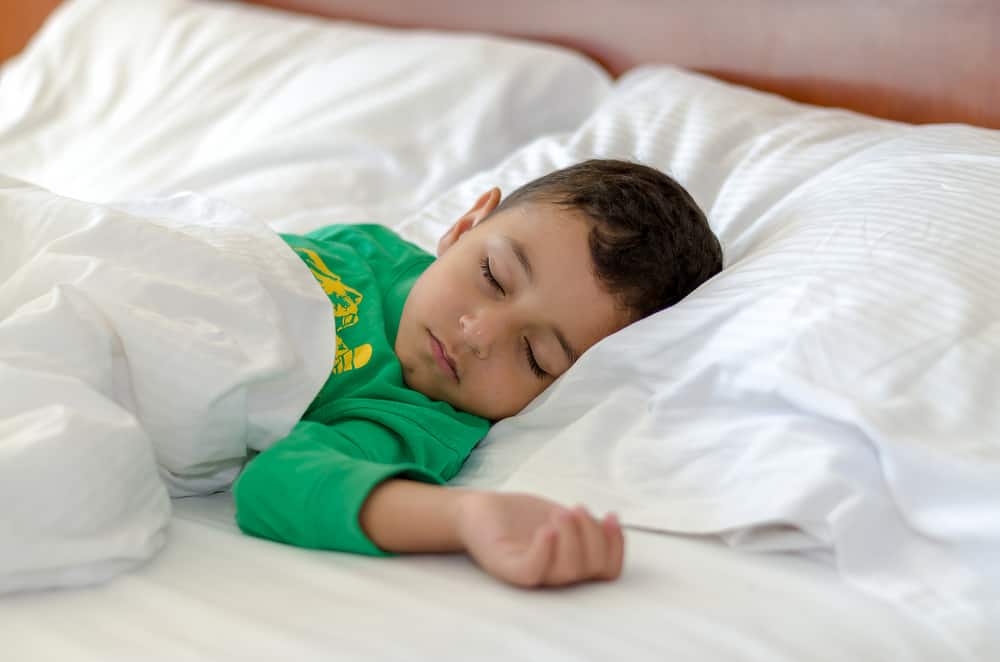Contents:
- Medical Video: Dr. Oz on Why You Should Take a Power Nap
- Why do children need a nap?
- How long does the child need a nap?
- How about a good nap?
- How can children continue to take regular naps?
Medical Video: Dr. Oz on Why You Should Take a Power Nap
Most children may not like nap time. Some children feel napping interferes with their playing time with their friends. So do not be surprised if many children have difficulty napping and must be scolded first by their mother when the afternoon nap arrived. However, it turns out that napping is really needed by children.
Why do children need a nap?
Eating and sleeping are two basic children's needs that are very important to fulfill. Adequate nutrition and sleep are needed to support the growth and development of children. Therefore, during this development period, children need more sleep than adults.
The need for a child's sleep time is very much, making the child must be able to share sleep at night with a nap. If a child misses a nap, then chances are that the child cannot get enough sleep at night. Here, the function of napping is needed by the child.
In addition, napping is needed to help children not be tired, so that children can sleep well at night. Psychologically, napping can be fun for children, making children calmer and fresher.
Not only for children, napping is also beneficial for parents. When a child spends his nap time, parents can use that time for themselves, can rest or continue homework that has not been completed.
How long does the child need a nap?
Napping is needed by the child depending on the age of the child and adapted to the child's sleep needs that vary between ages. Please note that children aged 1-3 years need as much as 12-14 hours of sleep per day. Children aged 3-5 years need as much as 11-12 hours of sleep per day. Meanwhile, children aged 5-12 years need as much as 10-11 hours of sleep per day.
To meet the sleep needed for this child, children can take their nap time for 1-3 hours and adjust to sleep at night so that the child's total sleep time is neither excessive nor lacking. Ideally, children take a 90-minute or 1.5-hour nap.
How about a good nap?
It is better not to force the child to take a nap, this compulsion will actually make the child do not like to take a nap and also make his nap less quality. Let the child take his natural nap time. If you have been accustomed to take a nap from childhood, the child will know when to take a nap, the child will feel sleepy, and want to take a nap without being asked.
If the child still does not want or cannot take a nap, you should let the child play in his room. Children can read books or play alone quietly in their rooms. At least children get a break. And after that, you can advance your child's nighttime sleep so that the child still gets enough sleep.
It's best to make it a habit to take a nap after he finishes his lunch. This is a good time to take a nap. Napping during the past or late afternoon can make it difficult for children to sleep at night.
If you feel that napping actually makes your child unable to sleep or causes trouble sleeping at night, you can advance your child's nighttime sleep and the next day the child wakes up early. So that, during the day, the child feels sleepy and can take a nap faster than the time.
How can children continue to take regular naps?
Sometimes, children who have started to grow up, start forgetting their naps. The child is more absorbed in spending his afternoon playing with his friends than taking a nap. Therefore, you must be smart to create a habit of napping to be liked by children. Here are the tips:
- Create a comfortable sleeping environment for children. environment is very influential on children's sleep satisfaction. Do not distinguish the sleeping environment when children sleep day and night. Place the child in a place where he usually sleeps at night, this can also help children to fall asleep easily.
- Keep the temperature of the child's room comfortable so that the child is not too hot or cold during a nap. Also try to keep the environment around the child calm.
- Find out when the child starts to get sleepy during the day. Children will usually show signs of drowsiness, such as more fussy children, yawning, and rubbing their eyes, near the time after lunch. At this time you should invite the child to take a nap. Apply this the next day on a regular basis, you have built a habit of napping on children.
- Tell the child that another friend will take a nap after lunch, and will play again after waking up in the afternoon. Leave the child in his room even though he doesn't take a nap, let him rest in his room, eventually the child will fall asleep by itself.
READ ALSO
- Is Right Height Increasing When Children Sleep?
- 5 Bad Effects of Electronic Media That May Happen in Children
- Various Good and Bad Sleep Positions for Health












